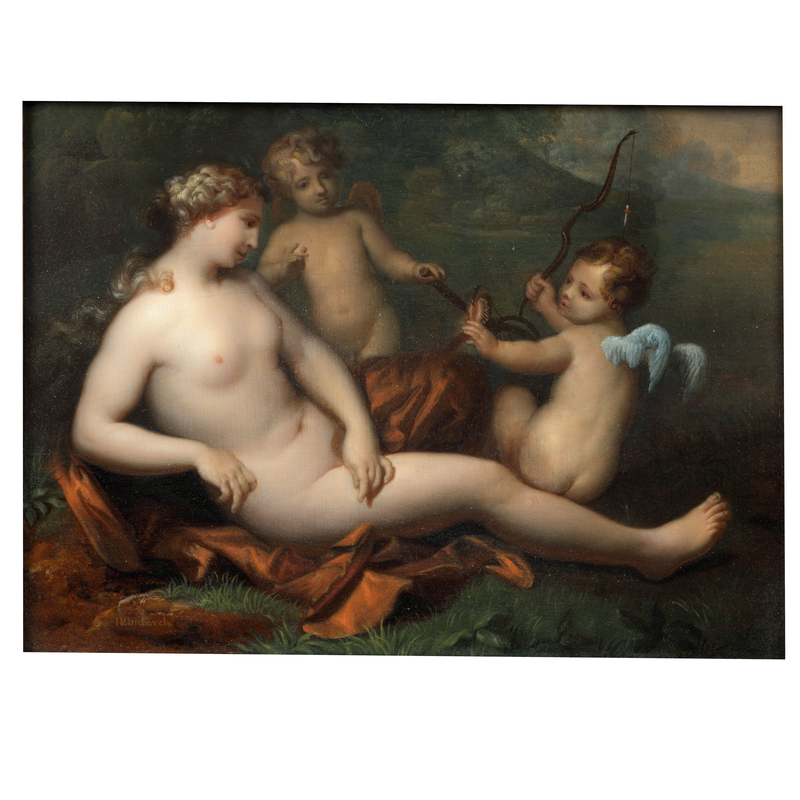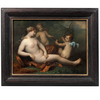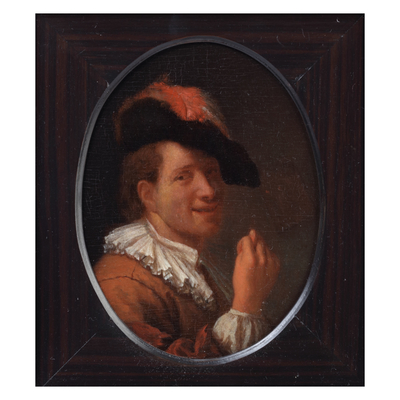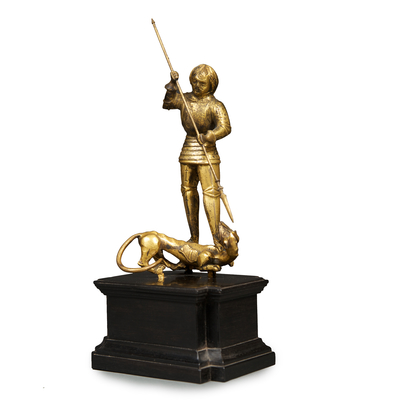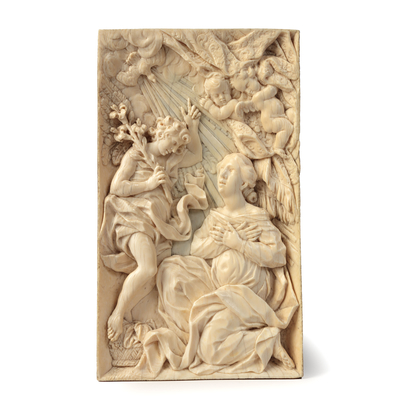Hendrik van Limborch, 'Two putti offering Venus a symbol of fertility'
Global shipping available
- Material
- Oil on panel
- Signature
- Signed lower left HVLimborch
- Height
- 23.1 cm
- Width
- 31.5 cm
- Literature
H. Miedema, ‘Lambert ten Kate in correspondence with Hendrik van Limborch: color harmony and chiaroscuro’ in: Simiolus: Netherlands Quarterly for the History of Art, vol. 35:3, 2011, pp. 174-187
Questions about this object?
Please use one of the contact options below:
Description
In a hillside landscape, a naked Venus rests in the grass with two putti next to her. Her left leg is covered with a red velvet cloth and she leans with her right arm against a tree or rock. The light falls on her curly, half-upped hair. One of the putti offers the goddess a Venus flytrap, a carnivorous plant from the sundew family, as an appropriate symbol of fertility. In his right hand, he holds a fishing rod or a bow and at the top of the plant is a hook with a thread attached. The putto has bright blue wings. The second putto, with red wings, has his right hand raised and is holding a tool in his left hand. The signature of Hendrik van Limborch is visible at the bottom left.
Hendrik van Limborch (1682-1759) was born in The Hague and was a painter and etcher in the artists' society Confrerie Pictura. He was a pupil of J.H. Brandon, Robert Duval, Jan de Baen and Adriaen van der Werff, and among his students were Gerard Copius and Pieter Lyonett. Besides portraits, he also produced historical, mythological and allegorical works. From preserved correspondence with, among others, the scholar Lambert ten Kate, it is clear that Van Limborch was interested in the use of colour and particularly in the mixing of shadow and light. Van Limborch and Ten Kate both carried out experiments with different pigments and quantities, in order to approach the natural course of light and dark as closely as possible.
